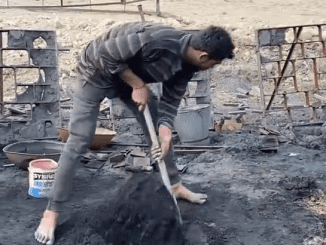
Bulldozers are often seen as the silent giants of construction and earthmoving operations, but these massive machines are far from being mere tools. They are true heavy-duty heroes, capable of transforming landscapes, building infrastructure, and enabling progress on a global scale. Their history, design, and versatility make bulldozers indispensable in construction, mining, forestry, and disaster recovery. Let’s take a closer look at the life of these remarkable machines and their role in the world of heavy equipment.

The Birth of the Bulldozer
The story of the bulldozer begins with the invention of the tractor, a machine that revolutionized farming in the late 19th century. The first bulldozer, however, didn’t emerge until the 1920s, when engineers adapted the bulldozer blade to the front of a tractor to push large amounts of dirt, rocks, and other materials. The innovation is often credited to James Cummings and J. Earl McLeod, who patented the first bulldozer design in 1923, which was then implemented on a modified Caterpillar track-type tractor.
By the time World War II arrived, bulldozers had already become indispensable in the construction industry. Their use expanded to military operations, where they were vital in building airstrips, clearing battlefields, and creating defensive positions. Post-war, bulldozers became even more essential to the growing infrastructure needs of the modern world.

Design and Features
Bulldozers are large, powerful machines equipped with a blade mounted to the front, used for pushing earth and debris. The most prominent feature of a bulldozer is its tracks, which allow it to traverse challenging terrains that would be impassable for wheeled vehicles. These tracks distribute the machine’s weight evenly, giving bulldozers the ability to operate on soft or uneven ground, like mud, sand, or snow.
A bulldozer’s blade comes in various shapes and sizes, depending on the task at hand. The most common types of blades are straight blades (S-blades), which are used for pushing dirt or debris in straight lines, and U-blades, which are more curved and designed for moving larger quantities of materials. Additionally, bulldozers may be equipped with a ripper at the rear, which can break up hard soil or rock for easier movement.

Workhorse of the Industry
Bulldozers are invaluable in a wide range of industries. In construction, they prepare the ground for foundations and roads, leveling uneven surfaces and clearing debris. In mining, bulldozers help with stripping overburden and moving materials, sometimes in environments that are extremely hazardous. Their use extends into forestry, where they help clear land for agriculture or manage brush and vegetation, as well as in disaster recovery operations, such as removing rubble after natural disasters like earthquakes or hurricanes.
One of the key reasons bulldozers are so reliable is their ability to work in harsh conditions. Whether in the deserts of the Middle East or the frozen tundra of the Arctic, bulldozers are engineered to endure extreme temperatures, heavy workloads, and challenging environments. They are often seen working long hours under tough conditions, a true testament to their durability and resilience.
The Future of Bulldozers
As technology continues to advance, the role of bulldozers is evolving. Modern bulldozers are increasingly equipped with GPS systems, advanced sensors, and automation, allowing for greater precision and efficiency on the job site. Operators can now control bulldozers with more accuracy, minimizing material waste and reducing the time required for each task.
While bulldozers have been around for nearly a century, their ability to adapt to new technologies and remain integral to construction and industrial operations ensures that these heavy-duty heroes will continue to be a vital part of the workforce for many years to come.
In summary, bulldozers are the backbone of construction and earth-moving industries, transforming raw land into the foundation for civilization. Their design, power, and versatility have made them indispensable heroes in the ongoing development of infrastructure, helping to shape the world as we know it. Watch the full video here: https://t.co/wGZvmTYwbj


